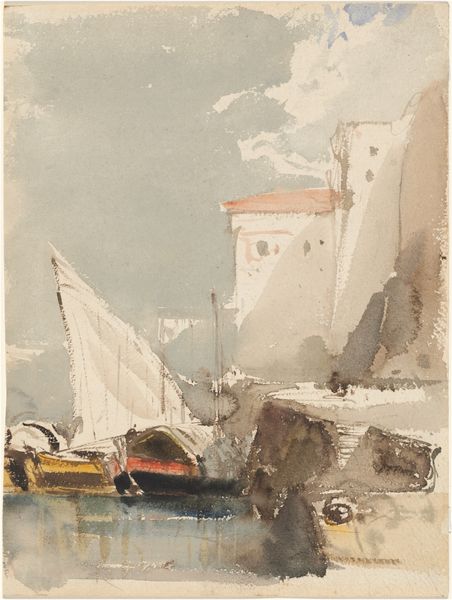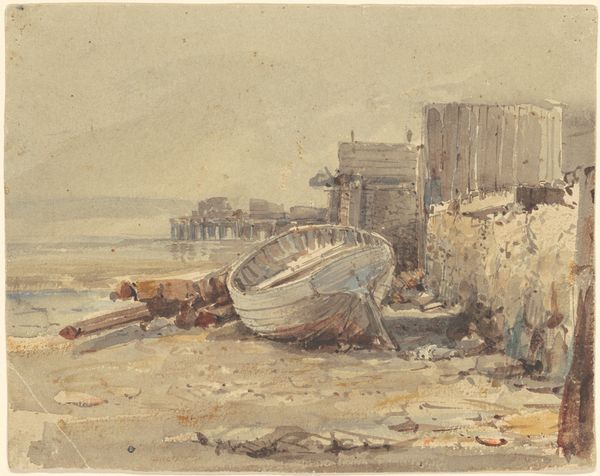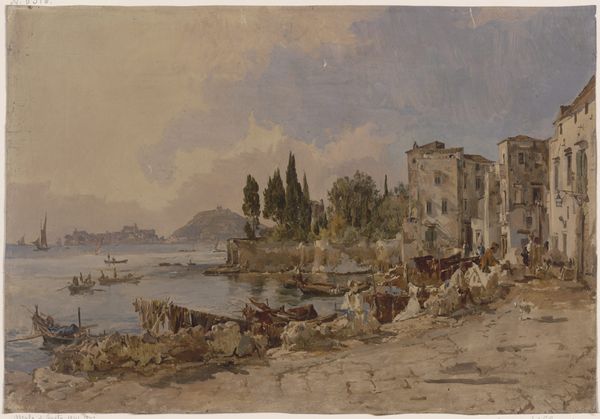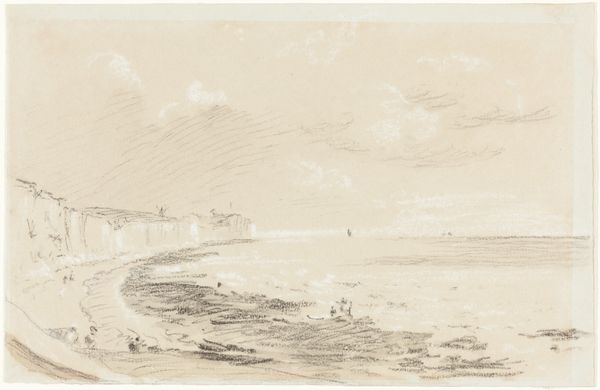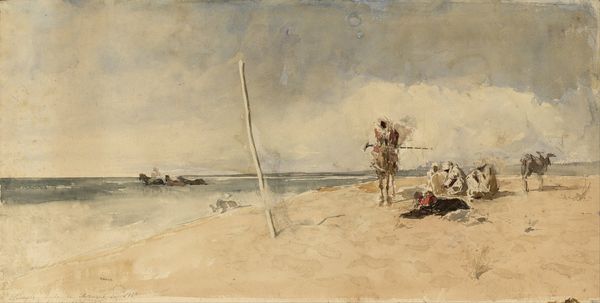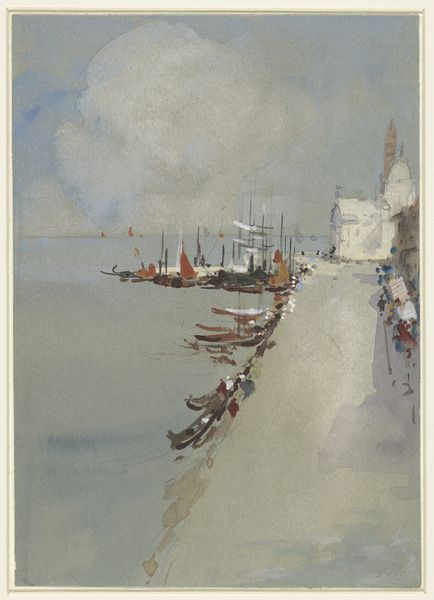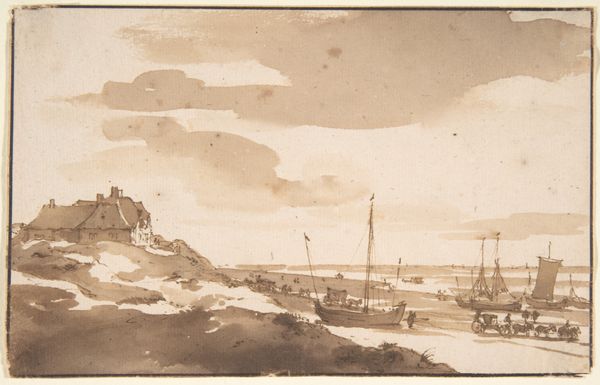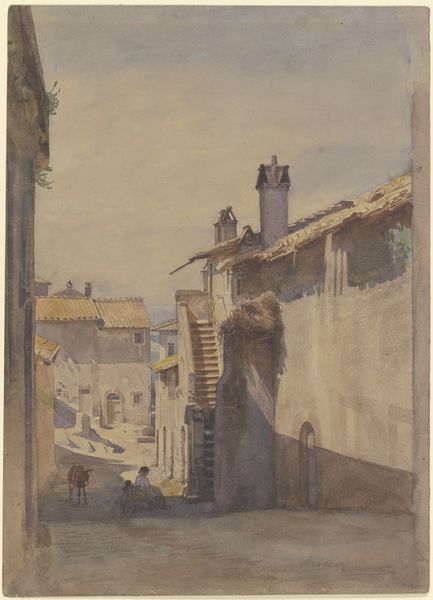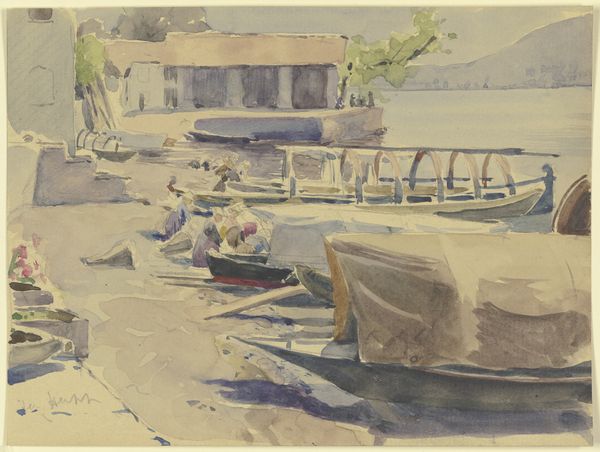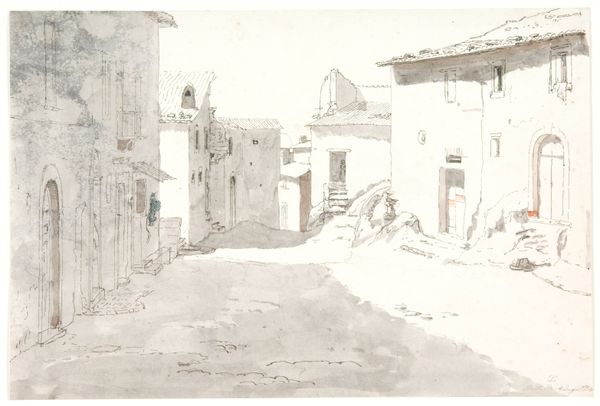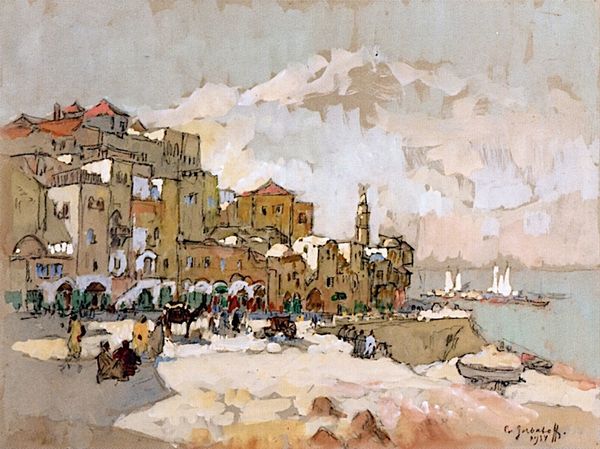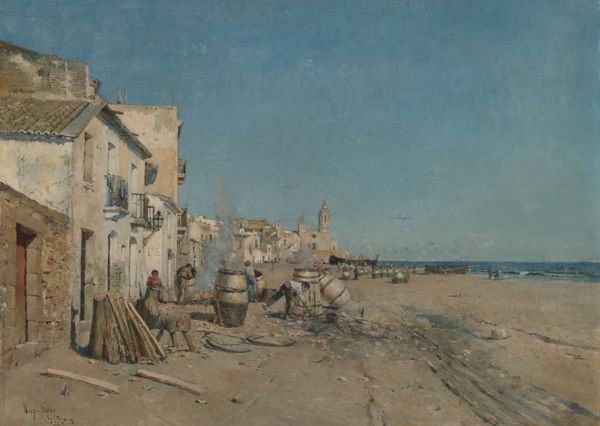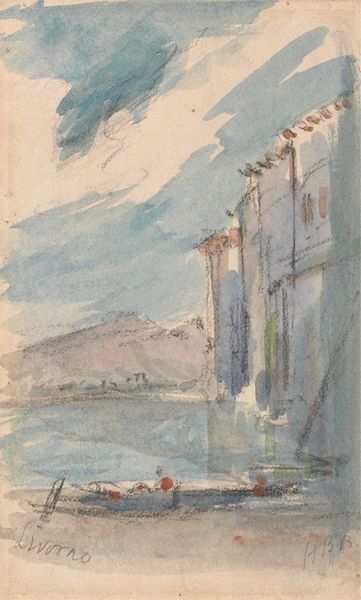
drawing, paper, watercolor
#
drawing
#
landscape
#
paper
#
watercolor
#
romanticism
#
cityscape
Copyright: Public Domain
Editor: This is Johann Nepomuk Rauch's "Via Sistina Elmo," a watercolor drawing on paper from sometime between 1841 and 1847. The stormy sea juxtaposed with the buildings makes me think about the power of nature versus human construction. How do you interpret this work, considering the history behind landscape art? Curator: It is crucial to consider Romanticism’s emphasis on the sublime – nature's power to inspire awe and terror. These cityscapes, increasingly popular due to the rise of urban tourism and Romantic sensibility, offered views of controlled chaos; humanity’s precarious existence against the backdrop of untamed nature. Think about what Rauch is showing and not showing - What’s the emphasis here? Editor: Well, the focus is balanced; buildings are prominent, but so is the water and the storm. I see the smallness of the figures that are dominated by buildings or the waves in the ocean. Is this then about showing humanity as secondary? Curator: Precisely. Consider the historical context. This was painted during a period of significant urban growth. By depicting humanity within, or even threatened by nature, artists like Rauch were participating in a wider cultural discussion about the place of individuals, but also industry within this changing world. Also, what feelings are evoked through this display? Is it about beauty or maybe about nature's sublime strength and impact on culture? Editor: The tones do bring feelings of uncertainty due to the storm and rough seas. It seems that Romanticism often involved a sense of something bigger at play than humanity. It makes me wonder how social change at the time impacted how art depicted these relationships between landscape and society. Curator: That's exactly the right thread to pull on. Next time, look into the public reception, think about contemporary views on the impact of industrial development on landscape depictions and discuss your work that way. Editor: I’ve definitely gained a richer perspective now about the conversation the painting encourages and how the public plays an important role within it.
Comments
No comments
Be the first to comment and join the conversation on the ultimate creative platform.
